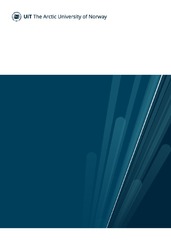| dc.description.abstract | This thesis investigates the co-optimization of state-of-the-art computer vision models and camera configurations to enable accurate, real-time soccer analysis. This work is part of the broader development of the Cyber Security Group's real-time soccer analysis system at UiT The Arctic University of Norway, a low-cost, modular solution for real-time performance analysis. By combining practical system design with tailored machine learning techniques, the research addresses the limitations of general-purpose detection models when applied to domain-specific environments.
Three cameras were installed at Romssa Arena to capture synchronized video data across multiple viewpoints. A custom dataset was constructed from this footage and used to fine-tune YOLOv12 detection models for player detection. Special attention was given to handling occlusions and enhancing performance in high-density situations, such as corner kicks, through model fine-tuning and strategic adjustments to the camera configuration. The resulting FT-8 model achieved a mAP@50 of 98.6% and a mAP@50-95 of 60.9%, demonstrating strong detection accuracy under real-time constraints.
The thesis also explores multi-view detection merging via homography transformations, as well as tracking methodologies based on the Hungarian algorithm and ByteTrack. Experiments reveal that dual-camera configurations enhance player detection robustness and identity consistency compared to single-camera setups. Additionally, comparative evaluations of YOLO and SAMURAI for ball detection show that YOLO offers superior real-time reliability, though SAMURAI exhibits potential under favorable conditions.
In sum, this work presents an empirically validated detection pipeline that bridges theoretical foundations and system-level engineering. It contributes both technical advancements and practical insights toward democratizing data-driven soccer analytics for resource-constrained teams. | |


 English
English norsk
norsk
